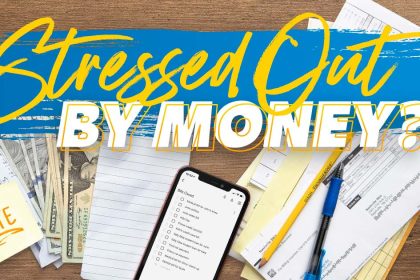The 401(k) contribution limit for employees in 2025 has increased to $23,500, up from $23,000 in 2024. The employer contribution limit also rises to $46,500, bringing the combined employee and employer 401(k) contribution limit to $70,000 for 2025.
Don’t underestimate the power of employer 401(k) contributions, especially as you advance in your career. As you gain seniority, you might find that employer profit-sharing or matching contributions become more significant. In strong years, some companies increase their profit-sharing contributions to reward employees. The year I left Credit Suisse, for instance, I received a $22,000 match/profit-sharing contribution on top of my maximum 401(k) contribution.
For employees ages 50 and older, the catch-up contribution limit remains at $7,500, unchanged from 2024. However, starting in 2025, employees aged 60 to 63 will benefit from an increased catch-up contribution limit of $11,250, rather than the standard $7,500, providing additional support for those approaching retirement.
Contributing to your tax-advantaged retirement accounts is just one leg of the new three-legged retirement stool. The other two legs are building up taxable retirement accounts and cultivating your “X factor“—a unique source of potential income or value outside of traditional investments.
With pensions now rare for most employees and Social Security projected to be underfunded by 25%, it’s smart to view Social Security as a bonus rather than a guarantee.
Special limited-time promotion: Free financial checkup and $100 gift card
If you have over $250,000 in investable assets, take advantage and schedule a free consultation with an Empower financial professional here. Complete your two free video calls with the advisor by November 30, 2024, and you’ll receive a free $100 Visa gift card. It’s worth getting a free financial checkup to see how your investments are positioned for the next four years.
Your Goal: Max Out Your 401(k) Every Year
If there’s one essential move every employee should make, it’s to strive to max out their 401(k) contributions each year. Since contributions are made with pre-tax income, maxing out your 401(k) is more manageable than it may seem. Plus, by making it automatic from each paycheck, you’ll quickly adapt to living within your means.
After just 10 years of consistent contributions, you’ll likely be surprised by your balance. Beyond your own contributions, you’re often growing your account with employer matches and investment returns, which can add up significantly.
If you’re earning over $70,000 annually, maxing out your 401(k) should be a priority. You’ll still have about $46,500 in taxable income to cover your living expenses. And if you’re making $100,000 or more, there’s little excuse not to maximize this benefit. You’re in at least the 22% federal marginal tax bracket and earning enough to live comfortably. Make sure you’re setting yourself up for a stronger retirement.
For those earning under $70,000, hitting the annual 401(k) max in 2025 may feel challenging but can still be doable, especially for incomes above $40,000. A lot depends on your budget and lifestyle.
Living with family rent-free? You may even be able to max out both your 401(k) and a Roth IRA, adding another $7,000 to your retirement. Just make sure to help around the house—those savings come with some extra duties!
Most Employees Are Far From Maxing Out Their 401(k) Plans
Although we know we should be taking full advantage of tax-advantaged retirement accounts, most don’t. According to Vanguard data, only 14% of employees maxed out their 401(k)s in 2023. And if these employees aren’t maxing out your 401(k)s, I suspect they aren’t actively building a taxable investment portfolio either.
Meanwhile, according to survey data from Northwestern Mutual, the magic number for a comfortable retirement surged to $1.46 million, up 15% over the $1.27 million reported in 2023. In 2020, the target number they reported was just $951,000.
There’s a clear disconnect between how much people are saving for retirement and how much they believe they’ll need once they retire. Fortunately, Social Security still provides benefits for eligible Americans, though it may not be enough on its own. For those who aren’t aggressively saving, the reality is that they’re likely planning to work longer to bridge the gap.
The Next Step After Contributing To A 401(k): Grow Your Taxable Investments
After maxing out your 401(k), the next step is to grow your taxable investment portfolio as large as possible. Consider your 401(k) as your retirement foundation; everything else builds on top of it. This taxable portfolio includes your brokerage account, real estate investments, venture capital, business equity, and other alternative investments.
In the worst case, by age 60, you’ll likely have at least $1 million in your 401(k) to support your retirement. In the best case, you’ll have millions in both your 401(k) and taxable investments. If you grow your taxable portfolio significantly, it may generate enough passive income for an earlier retirement.
As a financial freedom fighter, your mission, if you choose to accept it, is to max out your 401(k) each year and then build a taxable investment portfolio equal to 3X your 401(k) balance. Achieve this, and by age 50, you should have the option to retire early or pivot to a lower-paying, more fulfilling career if you choose.
Base Case Taxable Investment Portfolio Goal
Here’s a base case retirement savings chart I created to help visualize how much you might accumulate over time. By age 30, aim to have a taxable investment portfolio equal to your 401(k) balance. As your income grows, ideally, you can allocate even more toward taxable investments, given the 401(k) contribution limits.

Once you surpass the $100,000 investment threshold, compounding really kicks in. For example, if you had $1 million invested in the S&P 500 in 2024, it would have grown by over $250,000, showcasing the impact of market growth on larger sums.
Take Full Advantage Of 2025 401(k) Catch-up Contributions
If you’re not hitting these investment milestones by age, don’t panic. Instead, focus on building a robust savings and investment plan to get yourself back on track.
For those over 50, remember you can contribute an extra $7,500 in catch-up contributions to your 401(k) or 403(b) in 2025. And if you’re between 60 and 63, that catch-up contribution increases to $11,250, for a total of $34,750. Not bad, especially if you’re financially comfortable and able to let those funds grow untouched.
You may even want to talk to a financial professional, like I did when I was 35. If you’re lagging on your retirement savings, it might be time to ease up on the YOLO lifestyle—while it’s fun now, you may regret the spending once work is no longer an option.
Think of Your 401(k) as Retirement Insurance, Not A Main Source
Though contributing to your 401(k) feels like locking up your hard-earned money for decades, try to view it as a form of retirement insurance. This includes your Solo 401(k), 403(b), Thrift Savings Plan, SEP IRA, IRA, and Roth IRA.
Once you start treating maxing out these contributions as non-negotiable, with any returns as a bonus, you’ll be better able to focus on building wealth beyond these accounts. Frankly, I don’t know any high-net-worth individuals who rely solely on a large 401(k) to fund their retirement—none.
Instead, they invest aggressively outside of their 401(k), as their income has long surpassed contribution limits, pushing them to find other ways to grow wealth. So, if maxing out your 401(k) feels like a stretch, the priority should be increasing your income and reducing expenses.
Finding Income for 401(k) Contributions
A year after I left finance in 2012, I took on part-time consulting roles at Personal Capital and other fintech startups from 2013-2015. Having maxed out my 401(k) since my first full-time job in 2000, it felt odd not to be contributing pre-tax dollars at age 35. As Financial Samurai has grown, I’ve also contributed to our SEP IRA plan as much as possible.
Once my baseline contributions were covered, I focused my efforts on building a robust taxable portfolio, investing heavily in San Francisco physical real estate, private real estate in the Sunbelt, venture debt, and venture capital. These investments offer both potential capital appreciation and passive income.
Though I had considered easing up on taxable portfolio growth once I turned 45 in 2022, purchasing a new home in 2023 and the re-election of Trump reignited my motivation to keep growing wealth. At this stage, finding balance between my financial goals and family time is key. I know if I spend too much time trying to make more money I will inevitably become miserable.
At 47, I’m beginning to see a small glow on the horizon where I’ll eventually access my Solo 401(k), rollover IRA, and SEP IRA. However, after 37 years of growing these accounts, I imagine the greater challenge will be actually withdrawing from them. We’ll see when the time comes.
Readers, are you maxing out your 401(k) this year and next? Why or why not? How is your taxable investment portfolio coming along for financial freedom? And are you disappointed that the 2025 401(k) contribution limit only rose by $500?
Diversify Your Investments Beyond Your 401(k)
If you’re looking to diversify your investments beyond your 401(k), check out Fundrise. Fundrise manages over $3 billion in private real estate investments, with a primary focus on the Sunbelt region, where valuations are generally lower and yields tend to be higher.
As the Fed enters a multi-year cycle of interest rate cuts and with Trump as president, real estate demand may increase in the coming years. Given Trump’s background and success in real estate, I wouldn’t be surprised if he introduces buyer incentives and policies to support heartland regions, which were key in his election victory.
I’ve personally invested over $270,000 with Fundrise, and they are a long-time sponsor of Financial Samurai.
Get A Free Financial Consultation And $100
If you have over $250,000 in investable assets, schedule a free consultation with an Empower financial professional here. Complete your two video consultations before November 30, 2024, and you’ll receive a free $100 Visa gift card. There is no obligation to use their services after.
A year after leaving finance, I had two free consultations with an Empower financial professional that revealed a major blind spot. I had 52% of my portfolio sitting in cash, thinking I needed to invest like a conservative 65-year-old.
The financial professional reminded me that at 35, I still had many financial opportunities ahead. Within three months, I invested 80% of that cash and used the rest for a down payment on a fixer-upper—both decisions paid off well.
The statement is provided to you by Financial Samurai (“Promoter”) who has entered into a written referral agreement with Empower Advisory Group, LLC (“EAG”). Click here to learn more.
Read the full article here


















